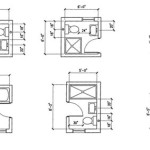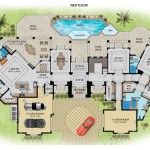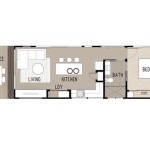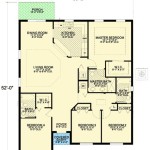Small Home With Loft Plans
Small homes with lofts are an increasingly popular solution for homeowners looking to maximize space in their homes without sacrificing style or comfort. Attic spaces are often underutilized, making them suitable for converting into additional living areas. Whether you need a guest room, home office, or additional storage, a loft addition can provide the perfect solution. With careful planning and design, you can create a functional and stylish loft space that seamlessly integrates with your existing home.
Benefits of Small Home with Loft Plans
There are numerous advantages to building a small home with a loft. These include:
- Efficient use of space: Lofts allow homeowners to maximize space in their homes without increasing their footprint. This is a cost-effective way to add extra square footage without sacrificing outdoor space or privacy.
- Additional living area: Lofts can provide additional living areas that can be used for a variety of purposes, such as guest rooms, home offices, playrooms, or even extra storage space.
- Improved aesthetics: A well-designed loft can add architectural interest and character to a small home. Exposed beams, vaulted ceilings, and large windows can create an open and airy space that feels more spacious than it actually is.
- Increased natural light: Lofts typically have large windows that provide an abundance of natural light. This helps to create a brighter and more inviting atmosphere, making the loft a desirable space for both living and working.
- Affordability: Adding a loft is generally more affordable than building an additional story to your home. This is because the loft can be built within the existing attic space, eliminating the need for additional foundation work or major structural changes.
Considerations for Small Home with Loft Plans
While small homes with lofts offer numerous benefits, there are a few considerations to keep in mind before moving forward with this type of design. These include:
- Headroom: Lofts typically have lower ceilings than the main floor of the house. This can be a concern for people who are tall or prefer more open spaces. It is important to consider the height of the loft and ensure that it provides sufficient headroom for your needs.
- Access: Lofts are typically accessed via a staircase or ladder. This can be a safety concern for young children or elderly individuals. It is important to consider the accessibility of the loft and make sure that it is safe for all members of your household.
- HVAC: Heating and cooling a loft can be a challenge. Proper insulation and ventilation are essential to ensure a comfortable temperature in the loft year-round. It is important to consult with an HVAC professional to determine the best way to heat and cool your loft space.
- Building codes: Lofts must comply with local building codes. These codes may specify the minimum height of the loft, the size of the staircase, and other safety features. It is important to check with your local building department to ensure that your loft plans meet all applicable codes.
Designing a Small Home with a Loft
When designing a small home with a loft, there are a few key considerations to keep in mind. These include:
- Purpose of the loft: Determine the primary purpose of your loft. This will help you determine the size, layout, and features that are needed. For example, a loft intended for use as a guest room will need a bed and a closet, while a loft intended for use as a home office will need a desk and storage space.
- Layout: The layout of the loft should be designed to maximize space and functionality. Consider the placement of windows, doors, and furniture to create a comfortable and inviting space.
- Lighting: Natural light is essential for creating a bright and airy loft space. Make sure to incorporate plenty of windows and skylights to maximize natural light. Artificial lighting can also be used to supplement natural light, especially in areas with limited windows.
- Ventilation: Proper ventilation is essential for maintaining a comfortable temperature in the loft. Consider adding windows, ceiling fans, or a ventilation system to circulate air and prevent the loft from feeling stuffy or humid.
- Storage: Storage is often a concern in small homes. Consider adding built-in storage solutions, such as shelves, drawers, or closets, to the loft to

Cozy And Efficient Small Cabin Floor Plan

27 Adorable Free Tiny House Floor Plans Craft Mart

20 House Plans With Lofts Tiny Small Luxury Designs Blog Homeplans Com

16 Smart Tiny House Loft Ideas

Pin Page

80 Tiny Houses With The Most Amazing Lofts

Cabin House Plan With Loft 2 Bed 1 Bath 1122 Sq Ft 176 1003

This Tiny House Comes With Two Large Loft Bedrooms And Open Plan Kitchen Living Room Autoevolution

Tiny Home Floor Plans Modern Lakefront Cottage Coastal America S Best House Blog

Tiny House Office Setup Guide Work From Home In A Small Space The Life








